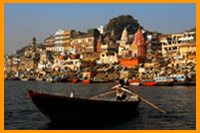Introduction
 Ramlila is simply an enactment of complete Hindu epic-Ramayana. It covers the complete life, values, principles and journey of Lord Rama. Every episode of his life is enacted with lots of detailing is very informative and is called a “Lila”.
Ramlila is simply an enactment of complete Hindu epic-Ramayana. It covers the complete life, values, principles and journey of Lord Rama. Every episode of his life is enacted with lots of detailing is very informative and is called a “Lila”. It is celebrated across India yet Ramlila of Delhi and Uttar Pradesh are typically very popular and special. Ramlila is one such event or celebration that till date embodies and encapsulates Hindu tradition and ethics very well.
The life and values of Lord Rama is the best lesson to be learnt in one’s life and especially to Hindus Ramlila remains the best visual treat and learning experiences in life. It is observed every year in the month of September- October.
Ramlila is followed across India with great vigor and enthusiasm. Perhaps many Hindus would not have read complete Ramayan but its enactment in the form of Ramlila is not only a learning experience from the life of Shri Ram , but also is fun and entertaining.
 Especially for children, who may find it cumbersome to Read the epic find it interesting to watch Ramlila and through it their young minds absorb many things. To move from one episode of lord Rama’s Life to another through the process of Ramlila is like a Pilgrimage to Hindus and indeed “worship In Action”.
Especially for children, who may find it cumbersome to Read the epic find it interesting to watch Ramlila and through it their young minds absorb many things. To move from one episode of lord Rama’s Life to another through the process of Ramlila is like a Pilgrimage to Hindus and indeed “worship In Action”.Since ages Lord Rama is observed and worshipped as “Maryada Purshottam” and seen as “Best among dignified”.
Celebrations
Across India
Although typically a Hindu celebration, Ramlila is followed by people from different religions and is open to all. Many cities in India hold Ramlila for different periods of time ranging from 7, 14 to 31 days.
 Not only as viewers but 100’s of Sadhus from across the country called “Ramayanis” assemble and recite the text and lessons of Ramayan. The enactment in forms of skits/ plays is very colorful and includes fascinating dresses, jewellary, decorations and carried out in very ethnic manner with no involvement of technology to make it look more ethnic and gives authenticity.
Not only as viewers but 100’s of Sadhus from across the country called “Ramayanis” assemble and recite the text and lessons of Ramayan. The enactment in forms of skits/ plays is very colorful and includes fascinating dresses, jewellary, decorations and carried out in very ethnic manner with no involvement of technology to make it look more ethnic and gives authenticity. Although celebrated across India the Ramlila of Delhi, UP and especially that of Ramnagar (Varanasi) are very popular.
Ramlila in Ramnagar:
Ramnagar is a small town located about 15 Km from Varanasi, Uttar Pradesh. The Ramlila observed here is not only popular but maintains its originality till date. It is believed that the “Maharaja of Kashi” started it years ago in a very traditional manner.
Certain highlights of this Ramlila that stands it apart from those observed in other states are:
Duration:
As compared to Ramlila celebrated elsewhere in India for duration of nearly 14 days, the one in Ramnagar is spread over complete 31 days, with every little event of importance being covered.
Multiple Sets:
As against single set designated for Ramlila in other cities, in Ramnagar there are multiple sets ranging from original palaces, to gardens to some historic place that are permanently reserved for this purpose only. These different locations symbolically denote different areas / places related to Ramayan for Example: Ashok vatika, Lanka, Panchvati etc… Along with the play as viewers move on the footsteps of lord Rama, it also becomes a spiritual experience, indeed a pilgrimage for devotees.
Unaffected By technology:
As most of the traditional fairs and festivals in India have moved and transformed into a new form with the growing technology, this place still imbibes and follows the traditional ways and means of Ramlila enactment. There is no use of electric lights, cameras, special effects, and other animation, sound effect technologies.
Still no seats:
one interesting thing to notice in this Ramlila is that as in earlier times there used to be no seats and elevated platforms for viewers, the same tradition is followed till today, wherein the viewers sit on ground, lean on roofs, climb on tress, elevate on walls to witness the event.


















